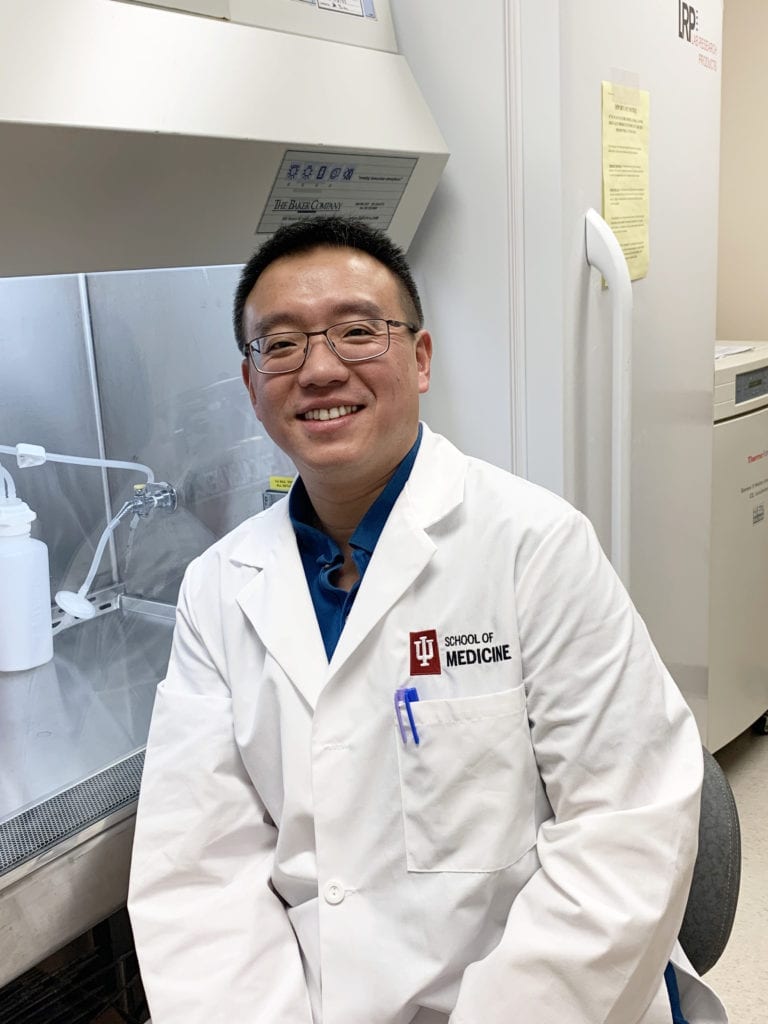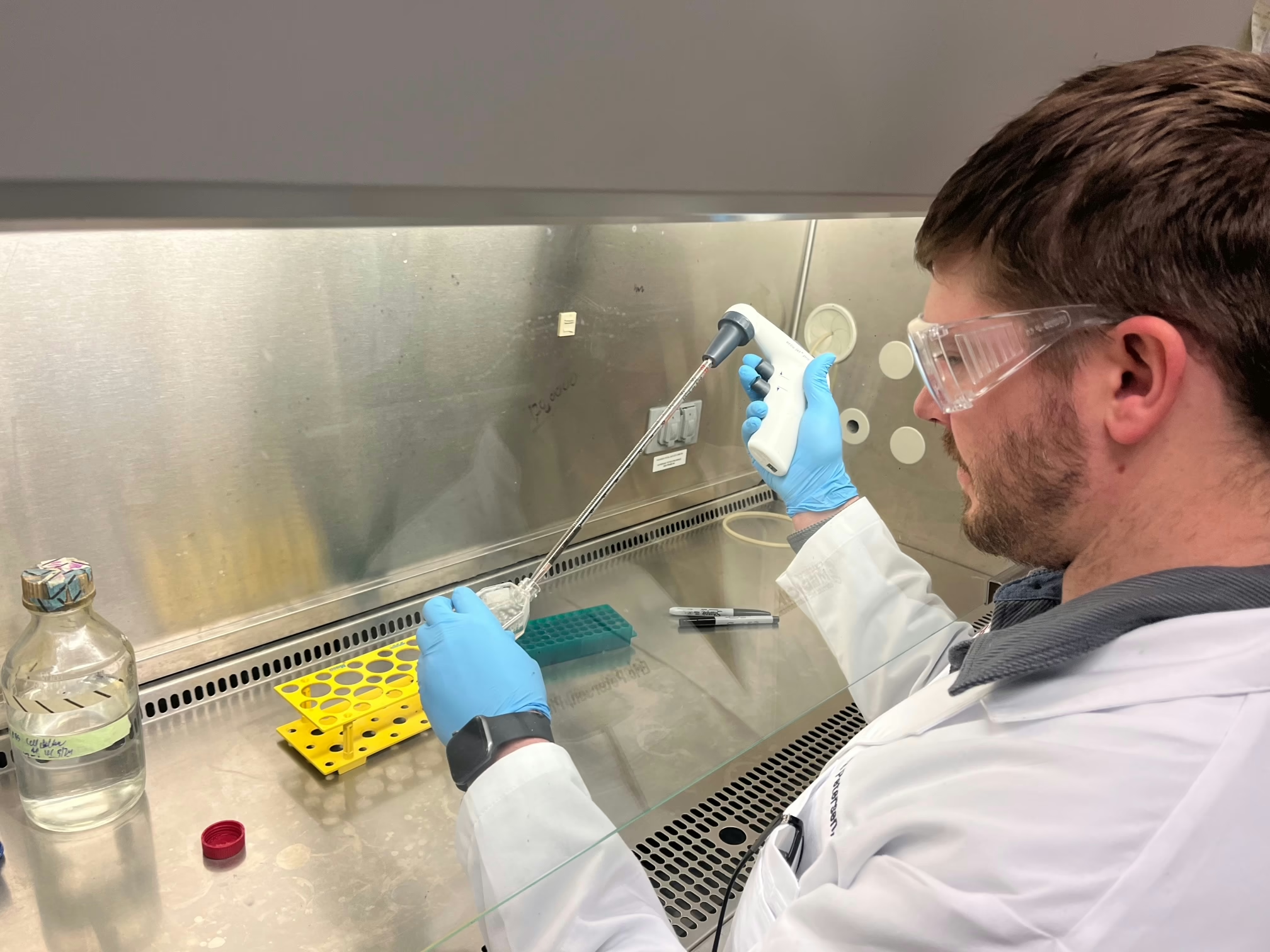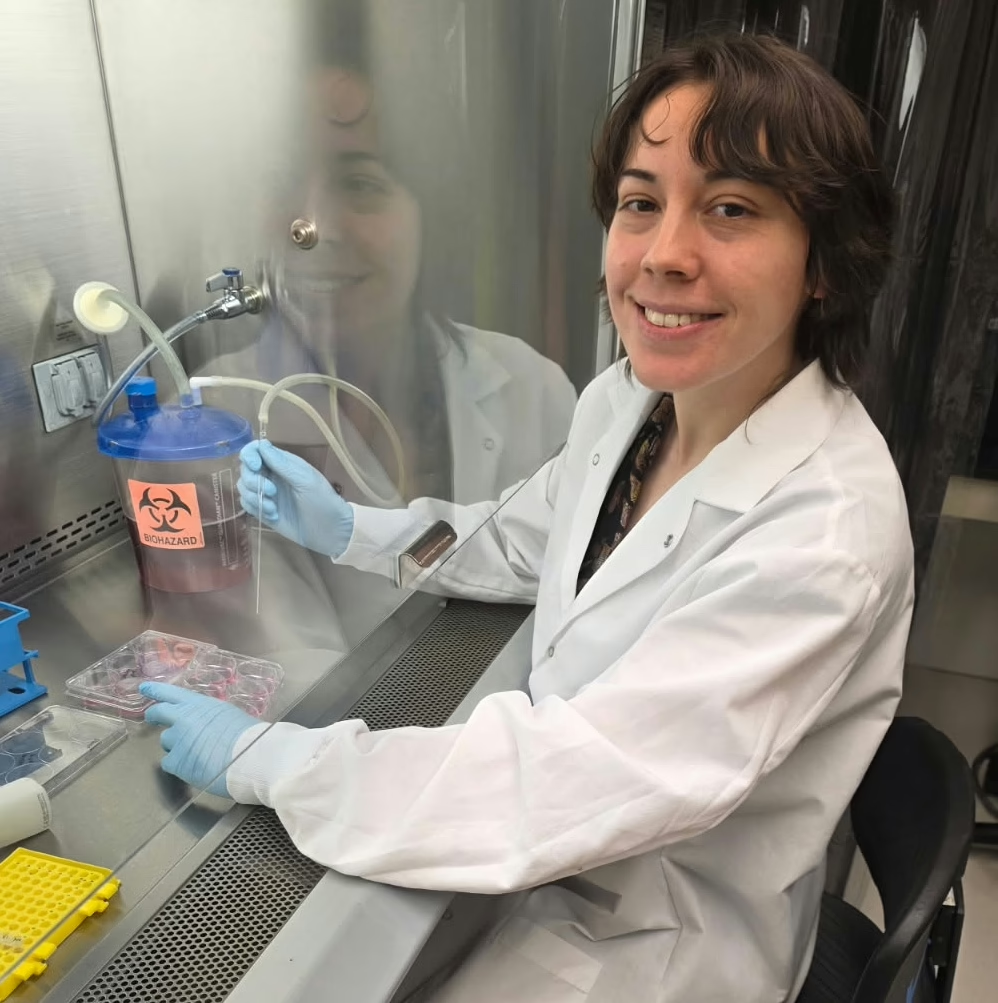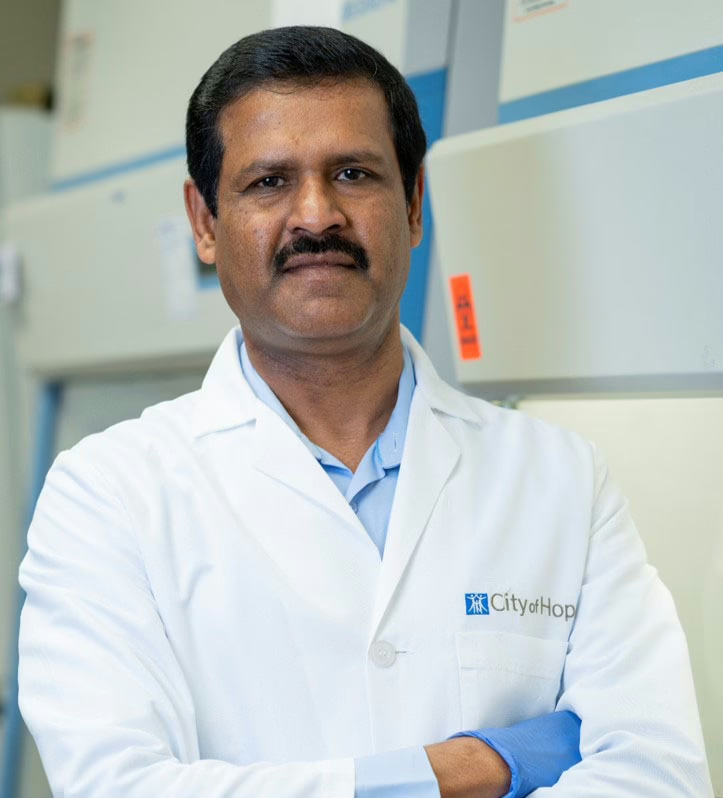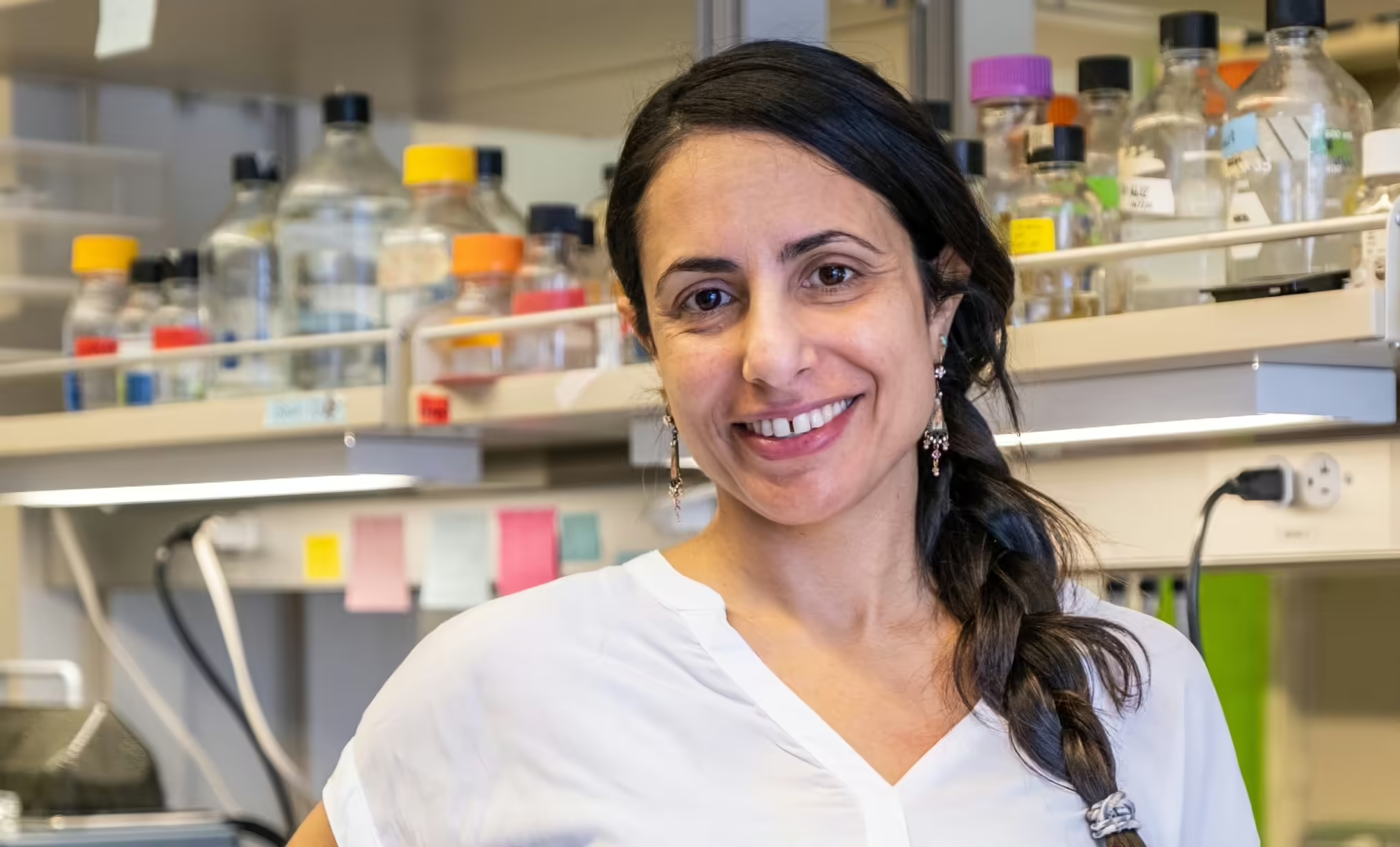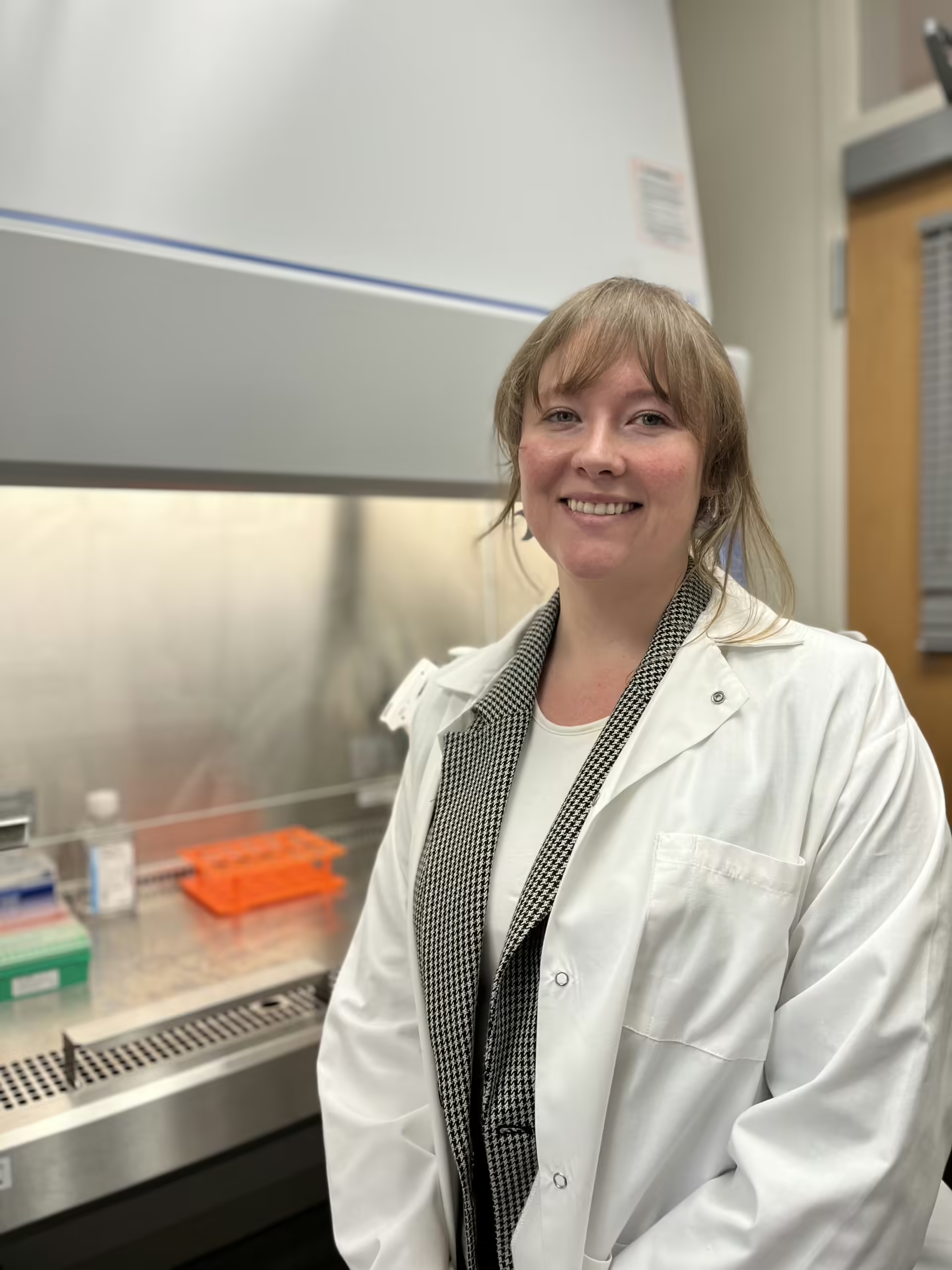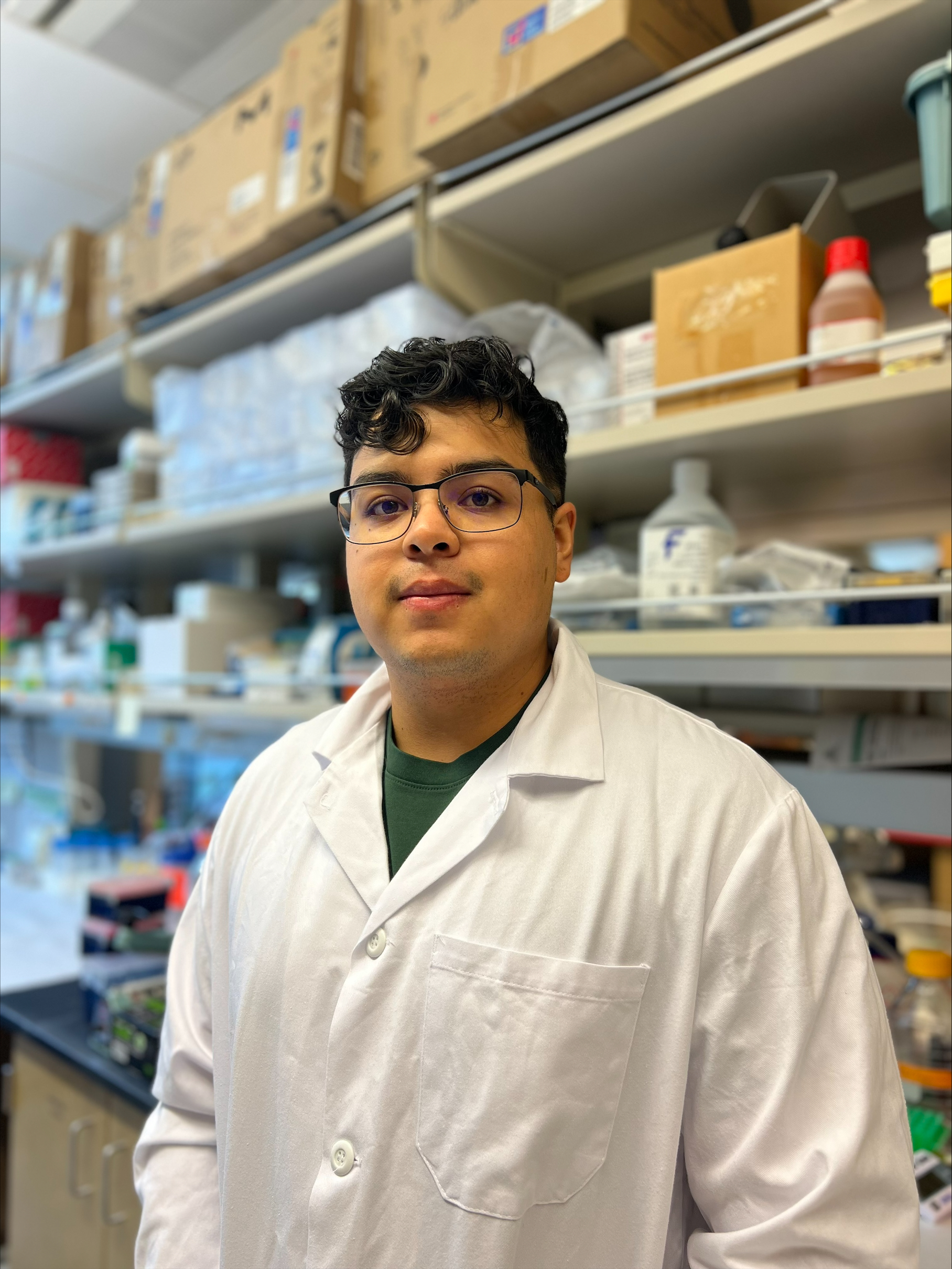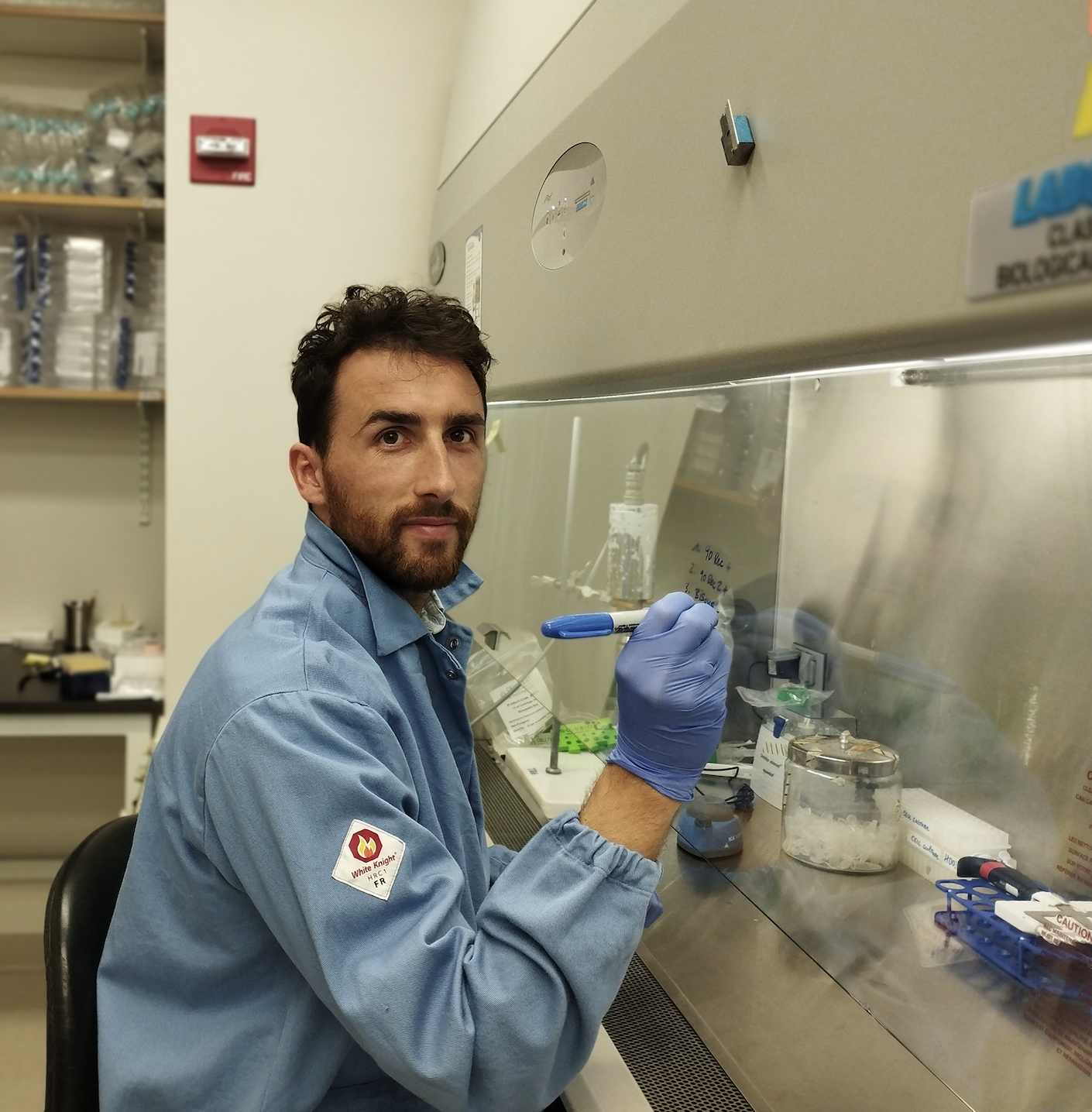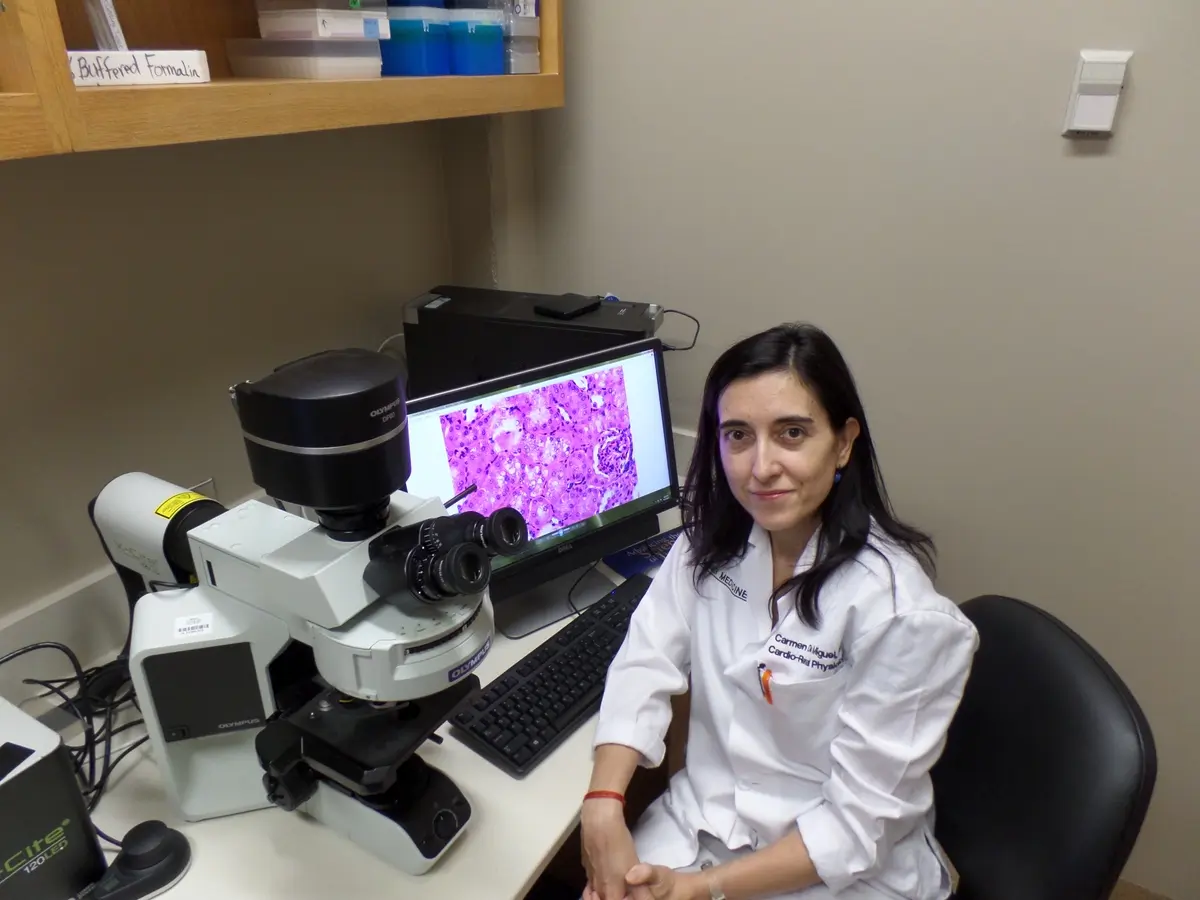In honor of Matt Polakow, the Tarson Family funded this project in its entirety.
Final Project Update
Thank you for supporting my project, “Bionic Insulin Pump”. In this report, I am excited to share that the success of our proof of principle in this project is being applied to improve the development of smart insulin candidates. Our approach is on the right track, and the ultimate goal is promising: A smart insulin that can reduce the risk of hypoglycemia and ease the burden for T1D patients from painful routine monitoring of glucose concentration for insulin dosing regimens.
In this period, we applied our successful approach to design a series of structure-based molecules with an “open/closed” switch regulated by a specific sugar. Engineering of this ligand-regulated switch within a protein requires: (i) a ligand-binding element and (ii) a mechanism coupling ligand binding to a functional step. The present application to insulin exploited the hinge-opening mechanism through which the native hormone interacts with its receptor. Our concept that a sugar molecule can regulate its function specifically in our designed insulin is valid. This phenomenon was proven by various methods, including structural biology, biophysics, and cell biology. These findings are the “proof of principle” needed for a general approach.
Ligand-induced structural changes have a long history related to glucose-responsive polymers, such as gels designed to swell and release insulin on changing local glucose concentration. However, this polymer material-based approach to engineer a glucose-responsive subcutaneous depot does not address a critical medical need: reducing the risk of hypoglycemia by precisely controlling insulin potency. Thus, based on our findings, the present monosaccharide-dependent disruption of an inter-chain tether in our analog has been shown as a “smart” molecule without the need for any external matrix. We modified the monosaccharide-binding element in our analogs to be regulated by glucose specifically with this validated idea. Replacing the fructose sensor with a bona fide glucose sensor provides a GRI of potential clinical utility.
Besides developing GRI, we are also building non-fibrillation glucagon (GRG) for the reservoir of a bi-hormonal pump. In this period, we designed several glucagon analogs that contain at least one side-chain stable comprising a bridge. We envision that this bridge stabilizes the conformation of glucagon. The feasibility of this engineering design was demonstrated in a pilot study: special chemical synthesis of a glucagon analog shown to have native activity and markedly resistance to fibrillation. Syntheses are now in progress.
The significance of this project lies in its combination of protein engineering with clinical goals: tight glycemic control in T1D is associated not only with prevention of hypoglycemic episodes but also the delay of long-term microvascular complications (such as impaired wound healing, retinopathy and renal disease). Our intrinsic GRI/GRG-enhanced closed-loop systems thus promise to provide substantial medical and societal benefits.
6-Month Project Update
Thank you for supporting my project, “Bionic Insulin Pump”. I am excited to inform you that this project has some promising progress for our “proof of principle” and we have started our pipeline of improved insulin candidates. Our goal is the same: Developing a smart insulin to relax burden for T1D patients, who currently need to diligently monitor the interstitial glucose concentration and precisely apply complex insulin dosing regimens.
Taking daily insulin to compensate the loss of hormone is the most feasible therapy for today’s type 1 patients. Thus, a “smart” insulin will be a feasible and convenient therapy for them. Currently, we have designed a series of molecules, which are candidates of this “smart insulin”. What we are seeking to is that this kind of insulin exhibits an independent trade-off function with a null-like function in hypoglycemic environment, and automatically activate in hyperglycemic condition. The product we are accessing is an analog without the need for additional glucose-detecting devices such as current glucose monitors or some exogenous binding partner. To reach this goal, we have developed a novel protocol to design, build, and test our candidates. In this study period, several potential analogs have been made and evaluated by cell models to see if they are exhibiting the requested regulatory phenomena and check if they are safe for using. Our results show that we have a prototype analog that could be regulated by a specific monosaccharide. This is a “proof of principle” we need for a general approach.
Click HERE to view the full project update.
Project Description
Type 1 diabetes (T1D) is a process that results in the irreversible destruction of insulin-producing beta cells by an individual’s own immune system. The resulting need for lifelong insulin management requires a staggering amount of attention and care. Decisions must be made on a minute-to-minute daily basis, about how to juggle insulin to match unpredictable factors like stress, illness, food, activity, all of which have meaningful effects on blood sugar. It’s no surprise that people with T1D are often unsuccessful in achieving and maintaining the recommended control of their diabetes.
In addition to being very difficult to achieve, the inability to regulate blood sugars precisely has very serious consequences: in the short-term, low blood glucose levels (hypoglycemia), which can cause seizures, unconsciousness, brain damage or death. The cumulative consequences include serious damage to the circulatory system, excretory system, eyes, and nerves.
Thus, it is of great interest to make insulin therapy safer and less burdensome while we develop a cure for T1D. Our goal is to regulate blood glucose similar to the pancreas using a bi-hormonal pump. My proposal focuses on two technologies to regulate blood sugar and mitigate the threat of hypoglycemia. The first pertains to glucose-responsive insulin (GRI), or “smart insulin” analogs. These are a novel class of insulin analogs that contain a glucose-regulated conformational switch that allows insulin to be active after a meal and then inactive as blood glucose levels decrease. This mechanism will lead to an appropriate level of insulin action released from a bi-hormonal pump to maintain metabolic homeostasis. Additionally, use of GRIs in insulin pumps (especially in closed-loop systems) would enhance time in range.
The second strategy focuses on novel glucagon analogs. Glucagon is a hormone that functions to maintain physiological blood sugar levels. However, it forms inactive clumps called amyloid fibrils when stored as a liquid. I want to make it ultra-stable and ultra-concentrated in the pump reservoir. Such pump-compatible glucagon analog formulations would enable use of bi-hormonal pumps to mitigate hypoglycemic episodes. These two technologies, if used together, could essentially eliminate hypoglycemic episodes in T1D patients using closed-loop systems. The success of either goal would be transformative.
My expectation is that our novel bi-hormonal pump system could operate without the needs of additional glucose-detecting devices. We will reduce the risks of short and long-term complications of T1D, and ultimately, our smart and safe system serves as a native-like pancreas for T1D people.
Click HERE to view the full project description.

